fall inside a hole
Round-Trip EF66 (1976)
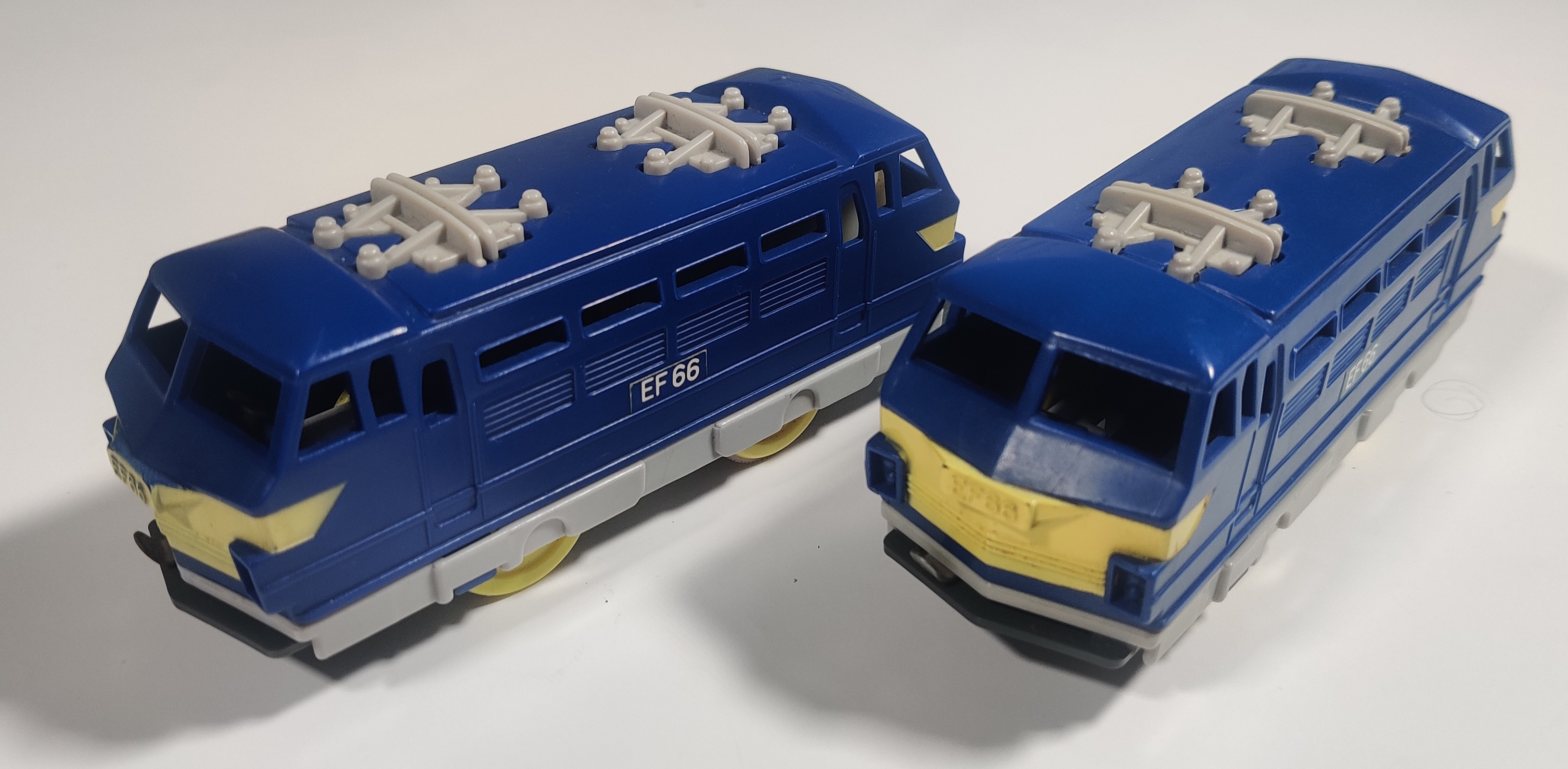
The Plarail Round-Trip or Reciprocating EF-66 was first released in a third-generation liftoff box like other early Round-Trip Plarail engines. This liftoff box release was quickly replaced by a fourth generation "train" box individual release. An updated gearbox design appeared when the EF66 moved from fifth generation boxes to sixth generation boxes around 1987. More details on the differences between the two reversing gearboxes can be seen on the Round-Trip repairs page. A peg hanging down from the gearbox slides part of the gear train over to make the engine reverse when it hits special trigger tracks, with the next hit sliding the gears back into place and reversing the engine again. This concept was also used in the Tomy Trains range of exported Plarail-like train sets. The metal bar on the back of the locomotive takes the place of the normal coupling system and it is supposed to be able to collect cars and then reverse and drive away with them, although this operation is hard to get working properly in practice. In 1993 the EF-66 lost its reversing ability and was released as EF-66 Electric Locomotive with many more EF-66 variations in the decades that followed.

EL-02 EF-66 Round Trip (1978)
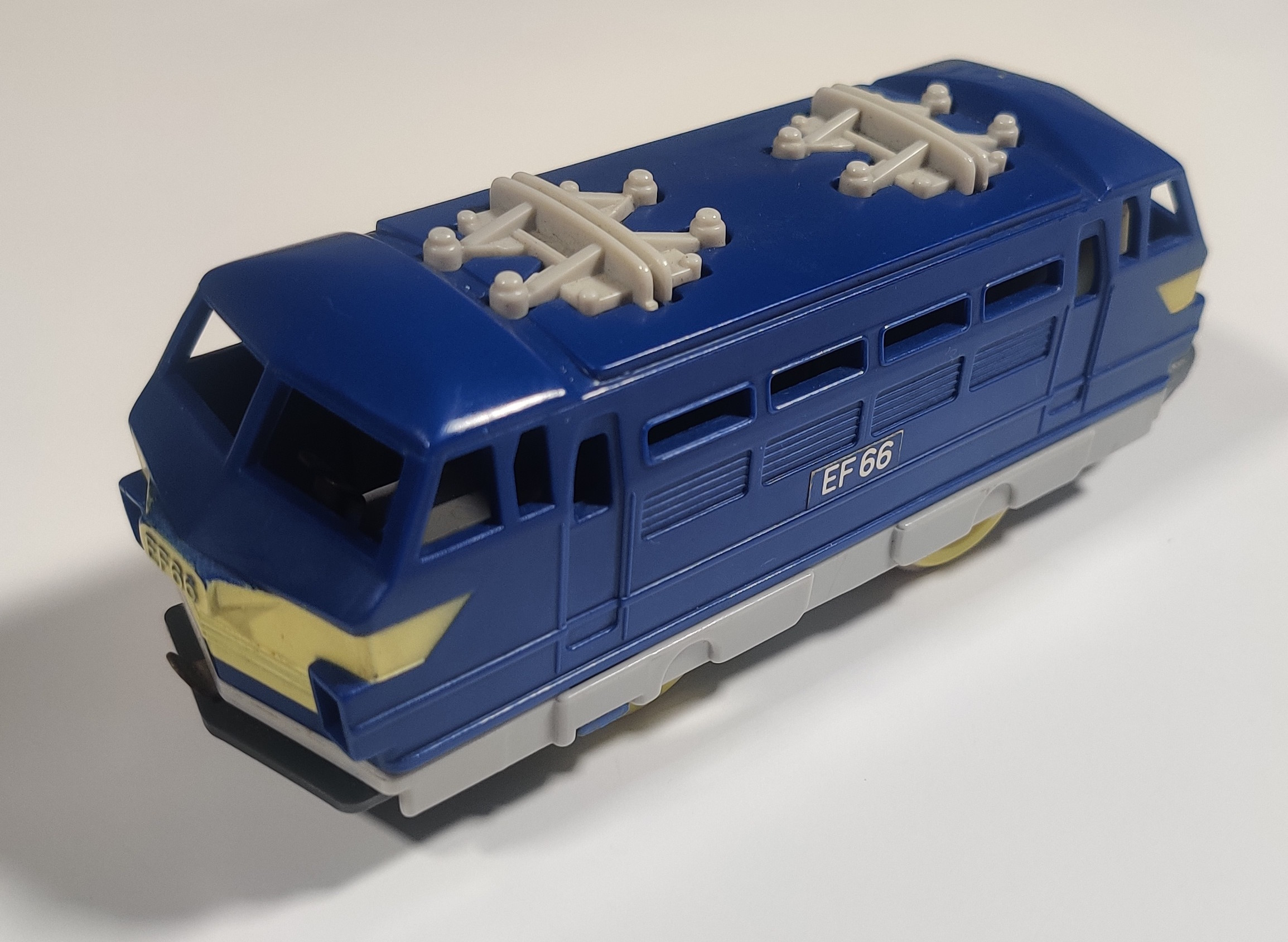
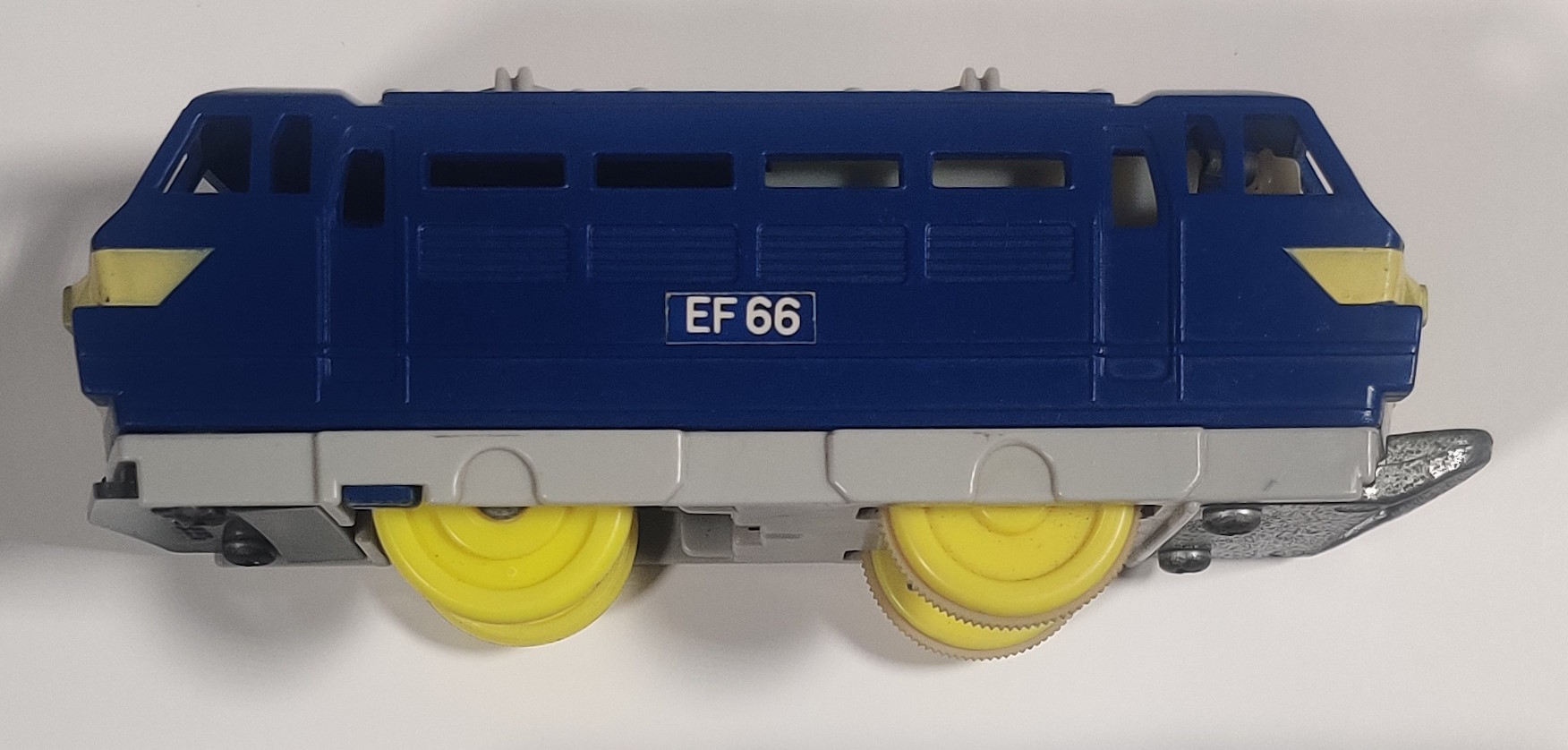
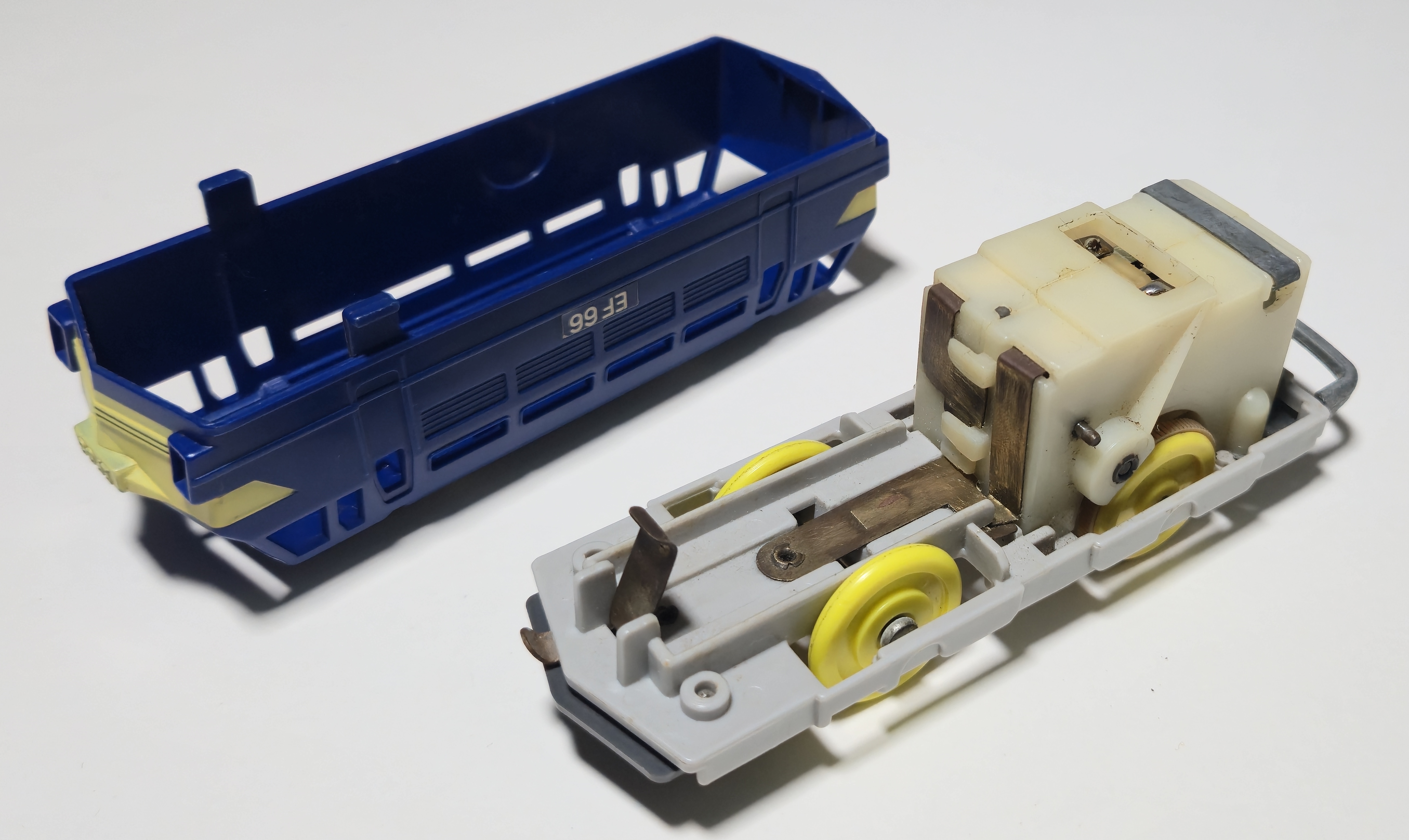
The fifth generation box EL-02 EF-66 Round-Trip (EF-66おうふく) was produced throughout the 1980s and features an earlier design of gearbox with enclosed drive tires. Like other individual EF-66 releases as well as the EF-66s included in the later Round-Trip Plarail sets it has a single rear coupling bar and a front power switch as opposed to the side power switch of the version used in releases with a front coupling bar.
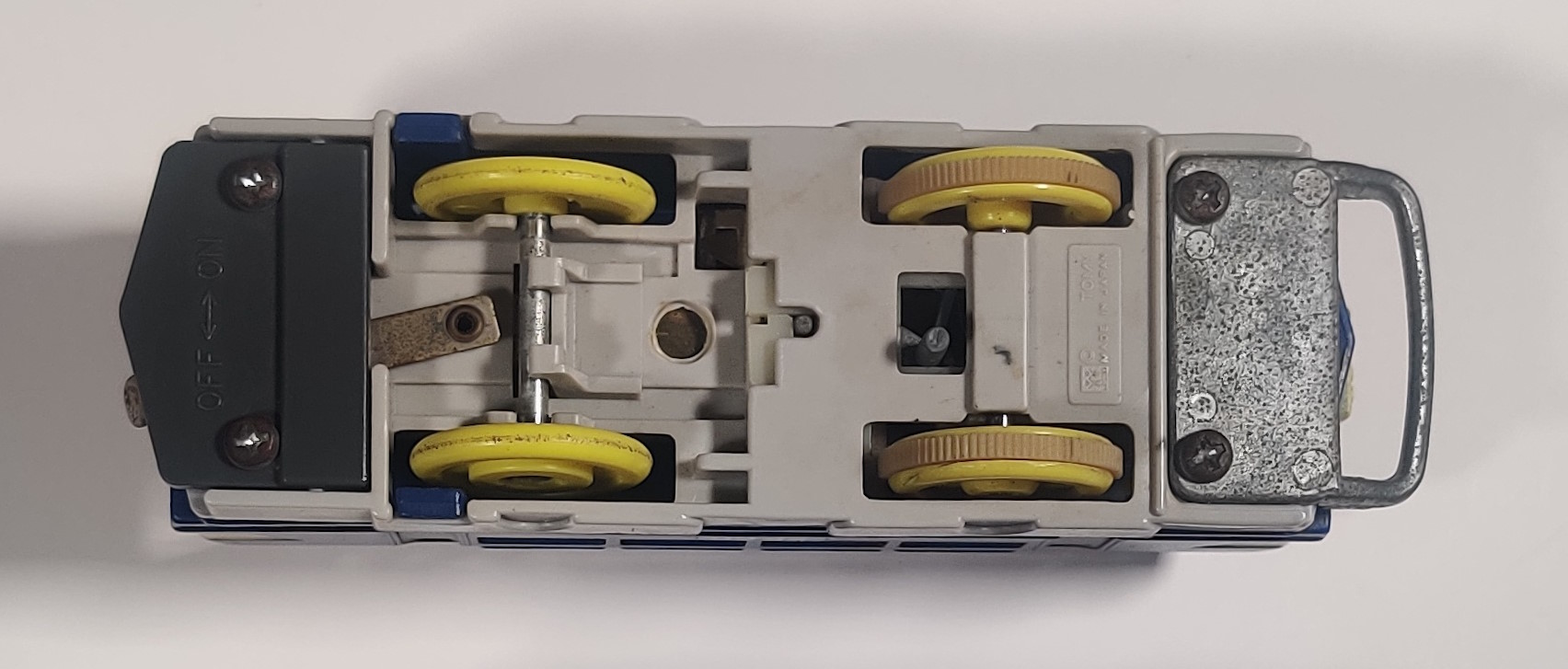
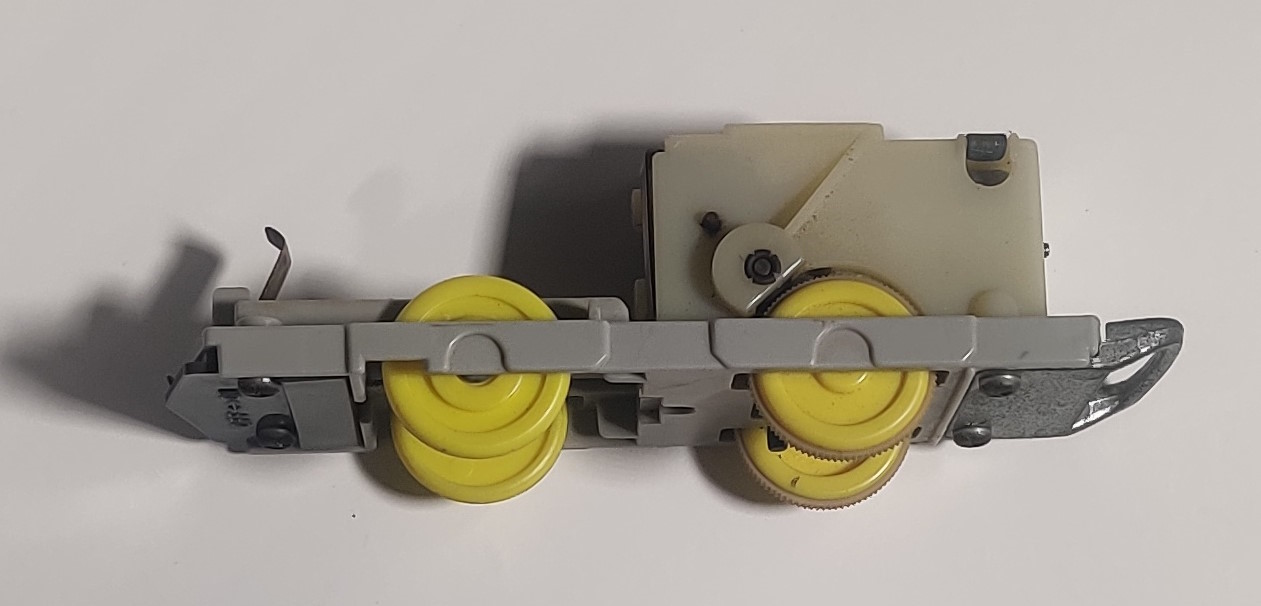
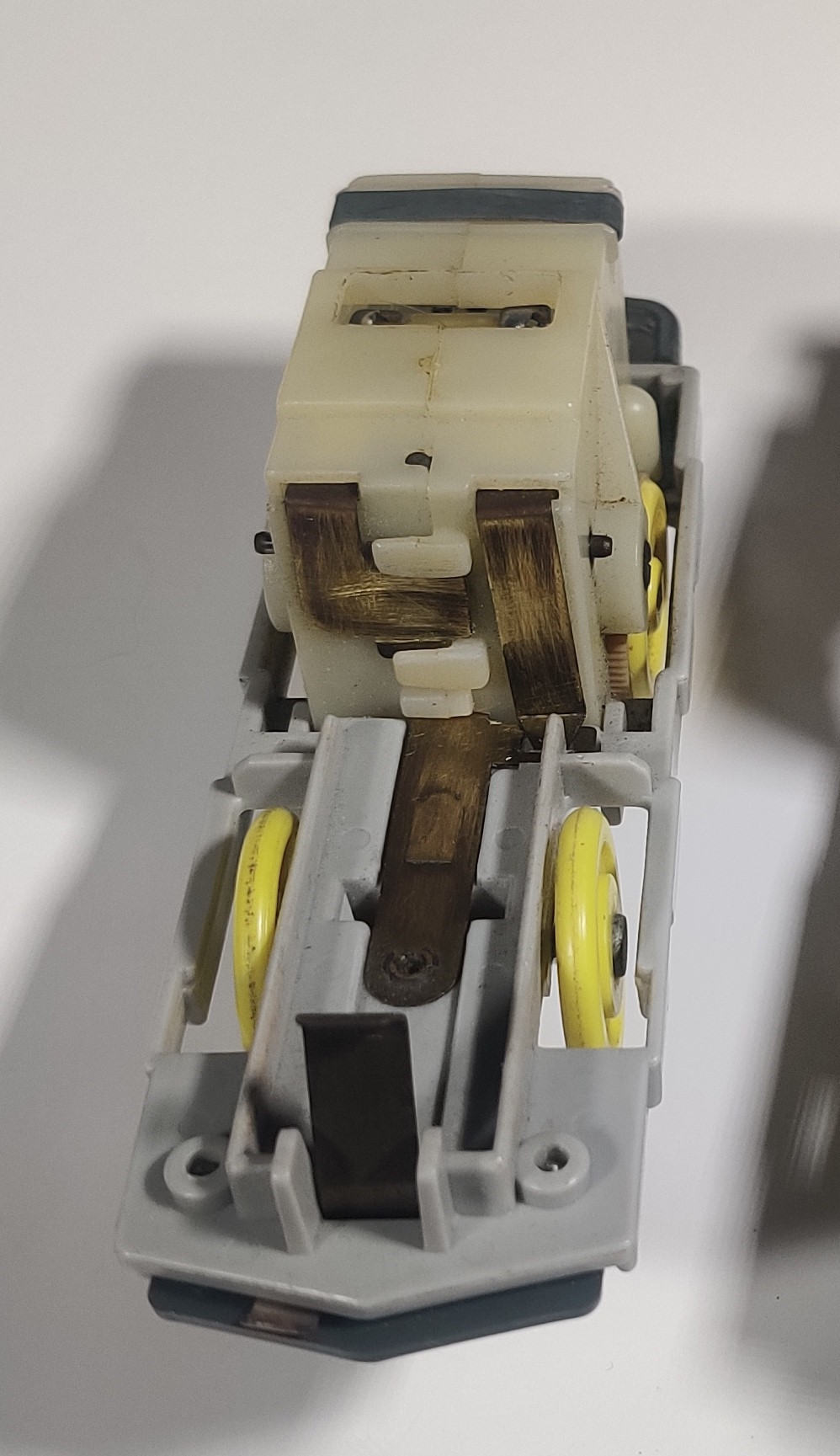
The underside of the locomotive shows a plastic plate where the front metal coupling bar would be installed on the two-bar version and the protruding pin which is slid from side to side on reversing tracks to reverse the gearbox. There is no electrical switching to reverse, just the mechanical changing of gears inside the gearbox. The round-trip EF66 has no normal activation tab, making it incompatible with many accessories that use the activation tab system. The earlier EF66s use a slightly older style of drive wheel with no additional plastic ring on the outside face.


This type of gearbox was used in the 1980 Forest Railway Loading and Unloading Set and the 1985 Round-Trip EF-66 Blue Train Set as well as the last Round-Trip set in 1986.

I acquired a junk Round-Trip EF-66 of the older gearbox type with the chassis cracked in multiple places and one of the body shell clips broken. I ended up using components from the gearbox to put reversing functionality back into a Hong Kong-made C12 gearbox to make a reversing C-12 steam locomotive. Tomy at some point in the 1970s designed a second reversing gearbox to fit in a version of the C-12 but ended up not producing a round-trip version and the toolings were later moved to Hong Kong and used to make export C-12s for Palitoy Discovery Time and Stelco Junior Express sets.
Round-Trip EF-66 (1987)
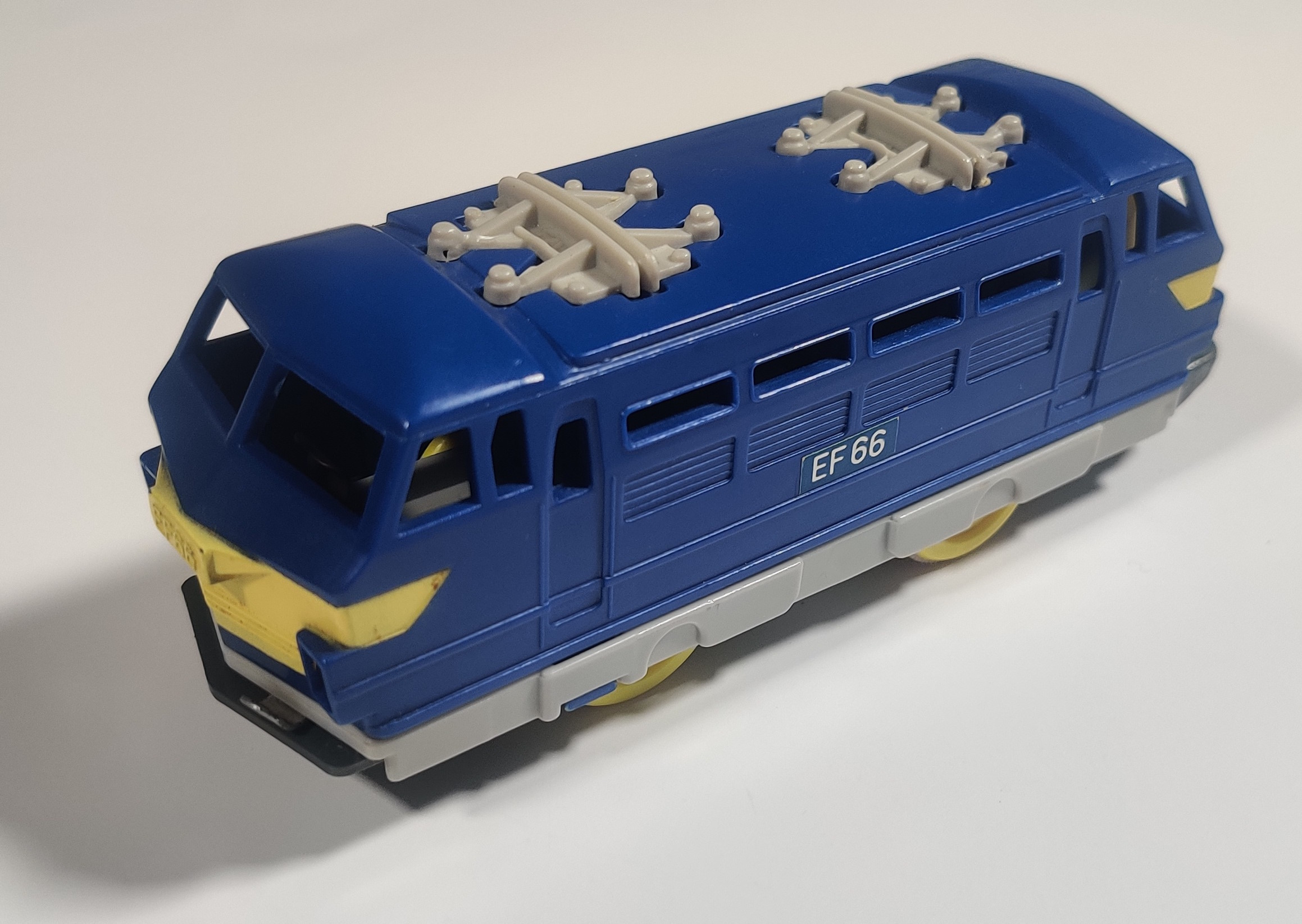
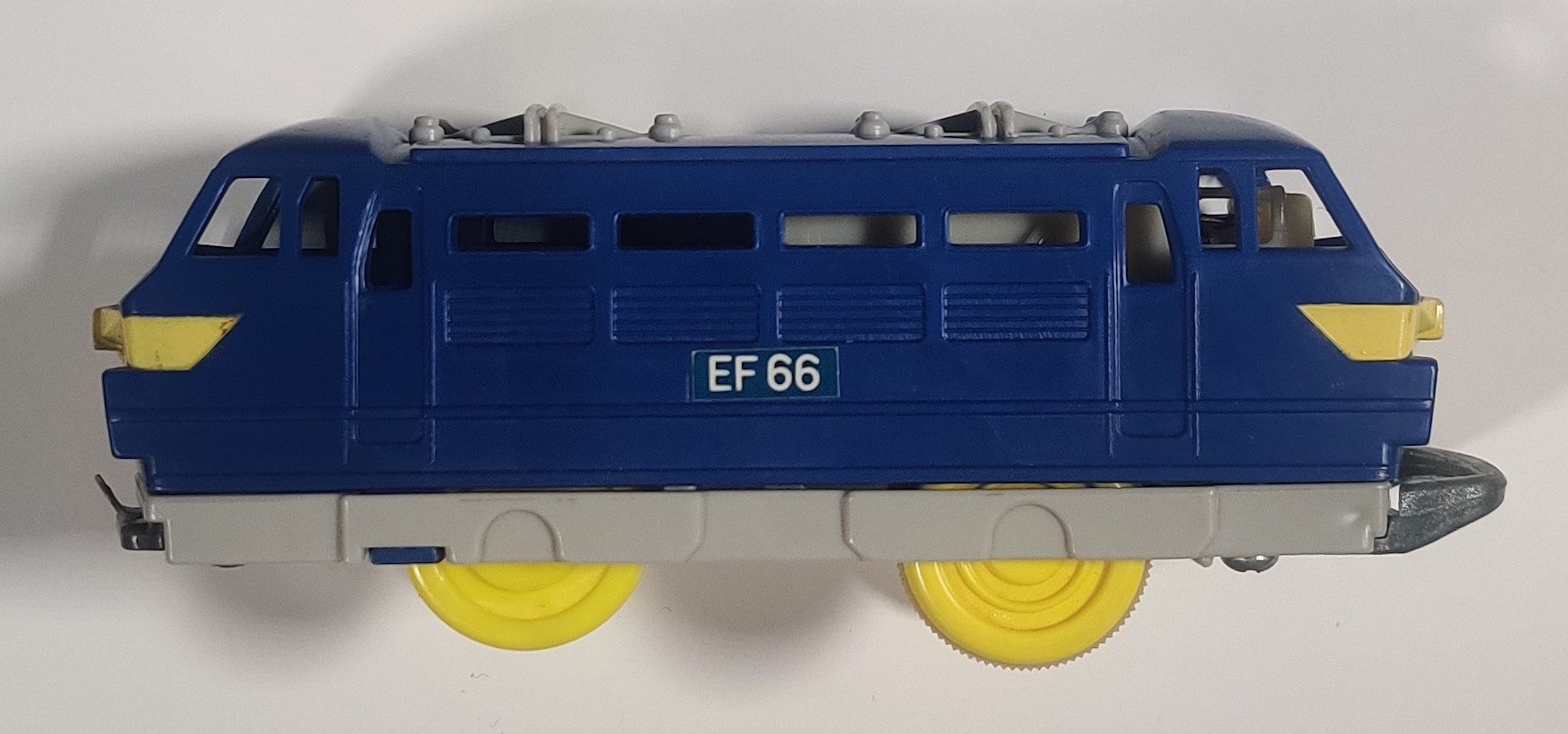
Later on a slightly revised gearbox and chassis were developed. The external molded details are virtually unchanged, using the same body shell with the same color scheme and single rear coupling bar as well as bent-up front power switch. The rear drive wheels have an additional concentric ring in the molding as well. This EF-66 was produced in a sixth generation box as 往復EF-66 (Round-Trip EF-66) until the end of 1992 when the tooling was changed to use the regular non-reversing old-power gearbox, ending the Round-Trip Plarail series.
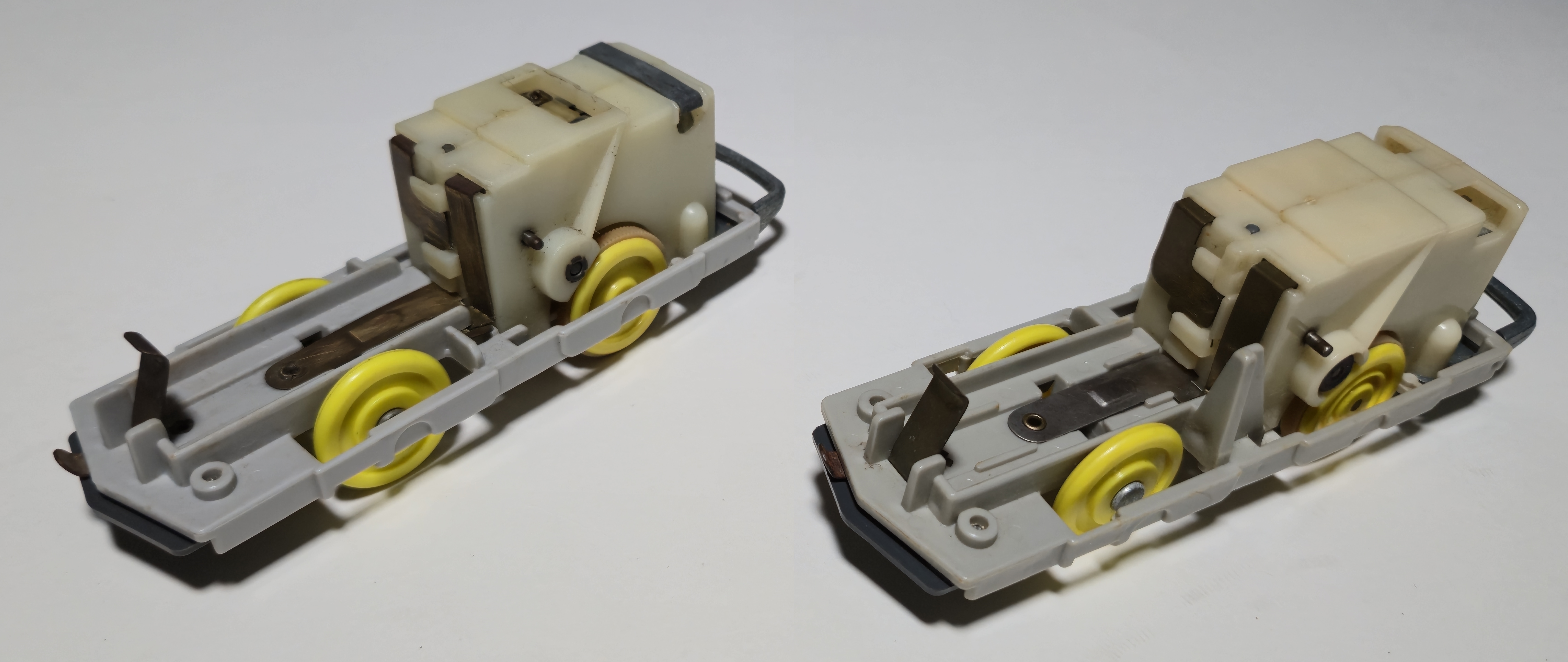
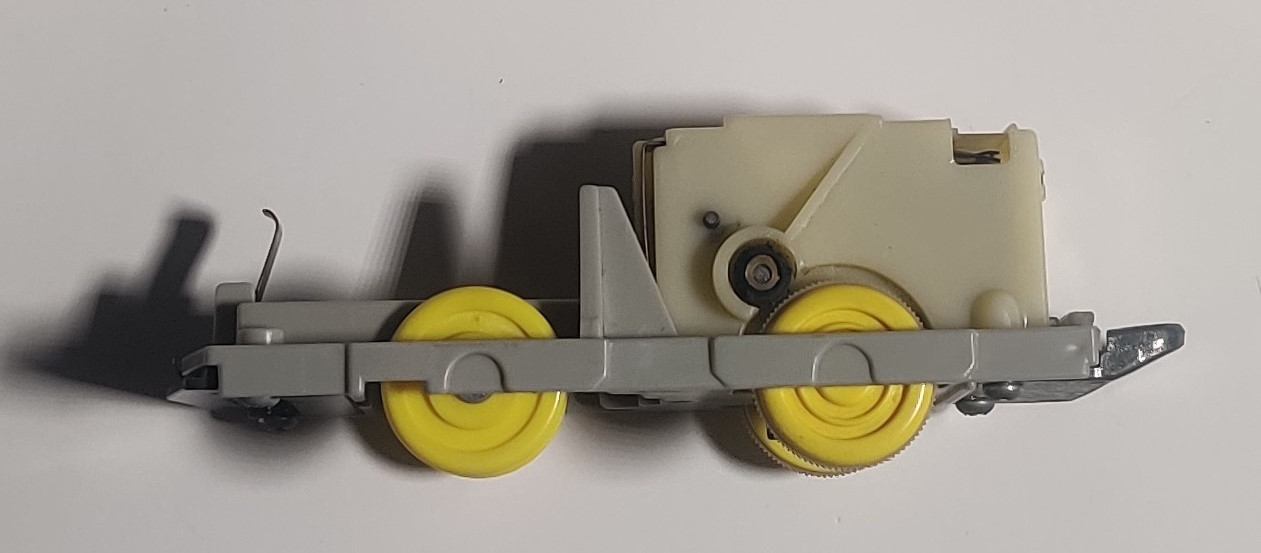
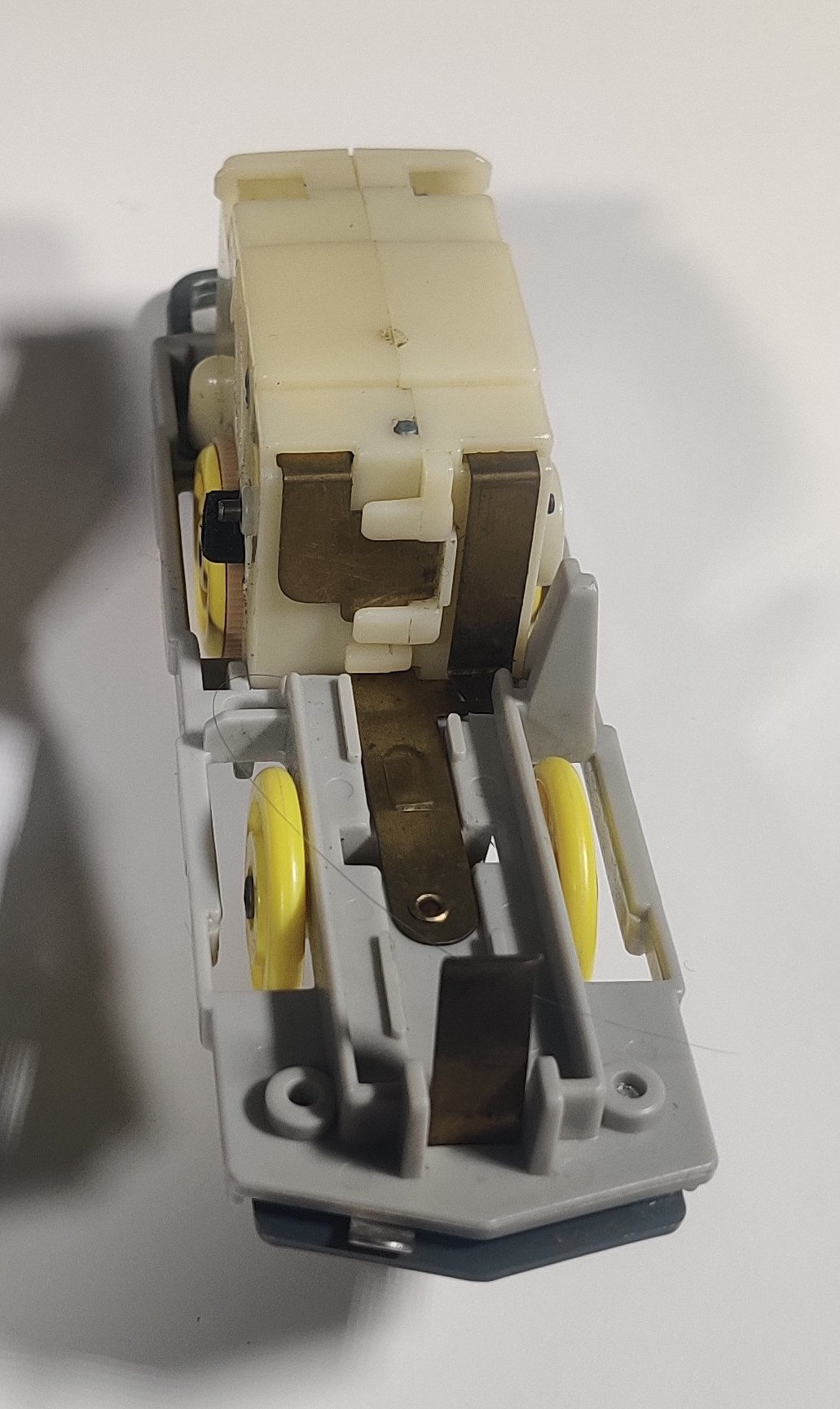
The gearbox output tires have been moved to the outside of the gearbox and there is an additional protruding support to keep the C battery in place inside the chassis.
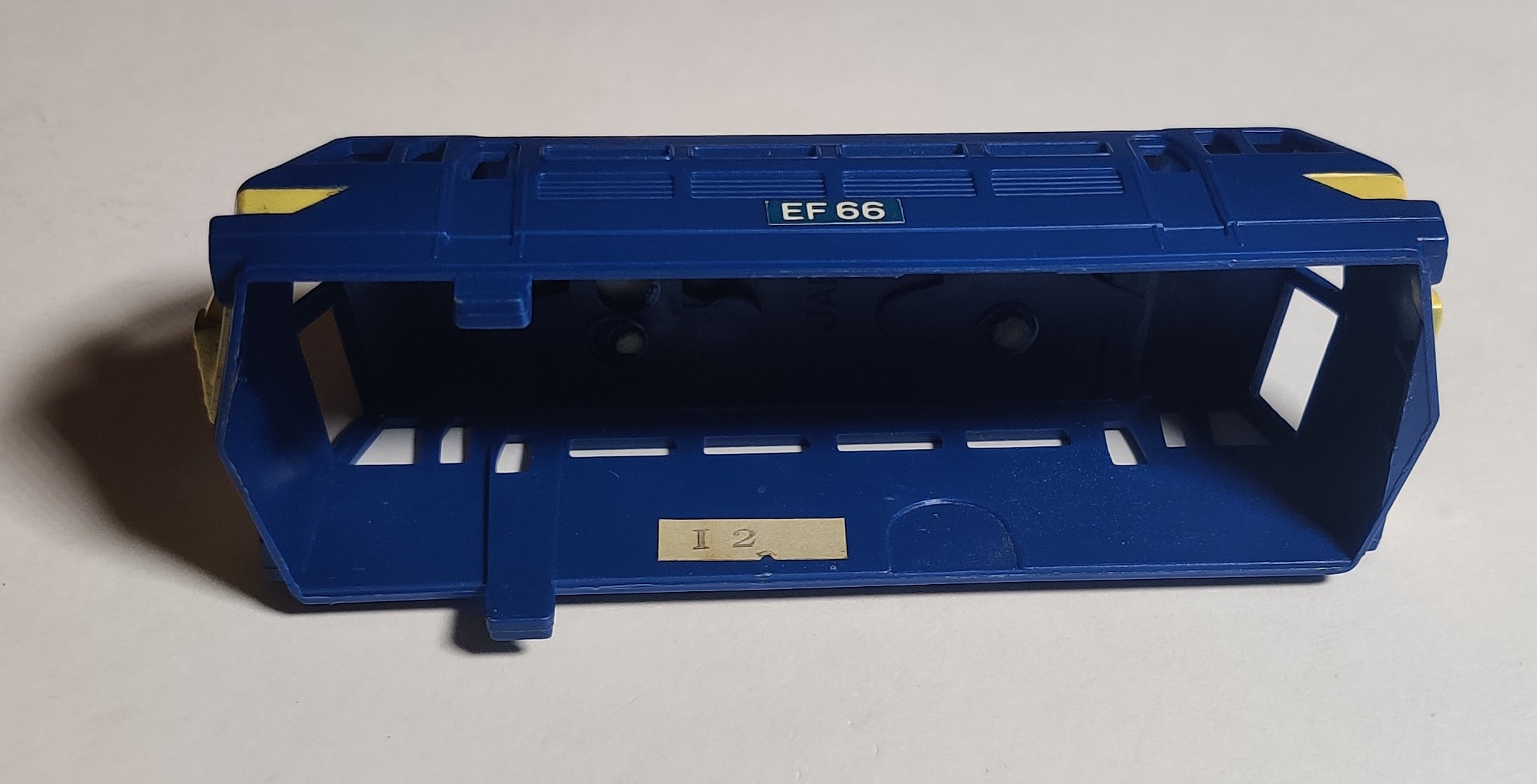
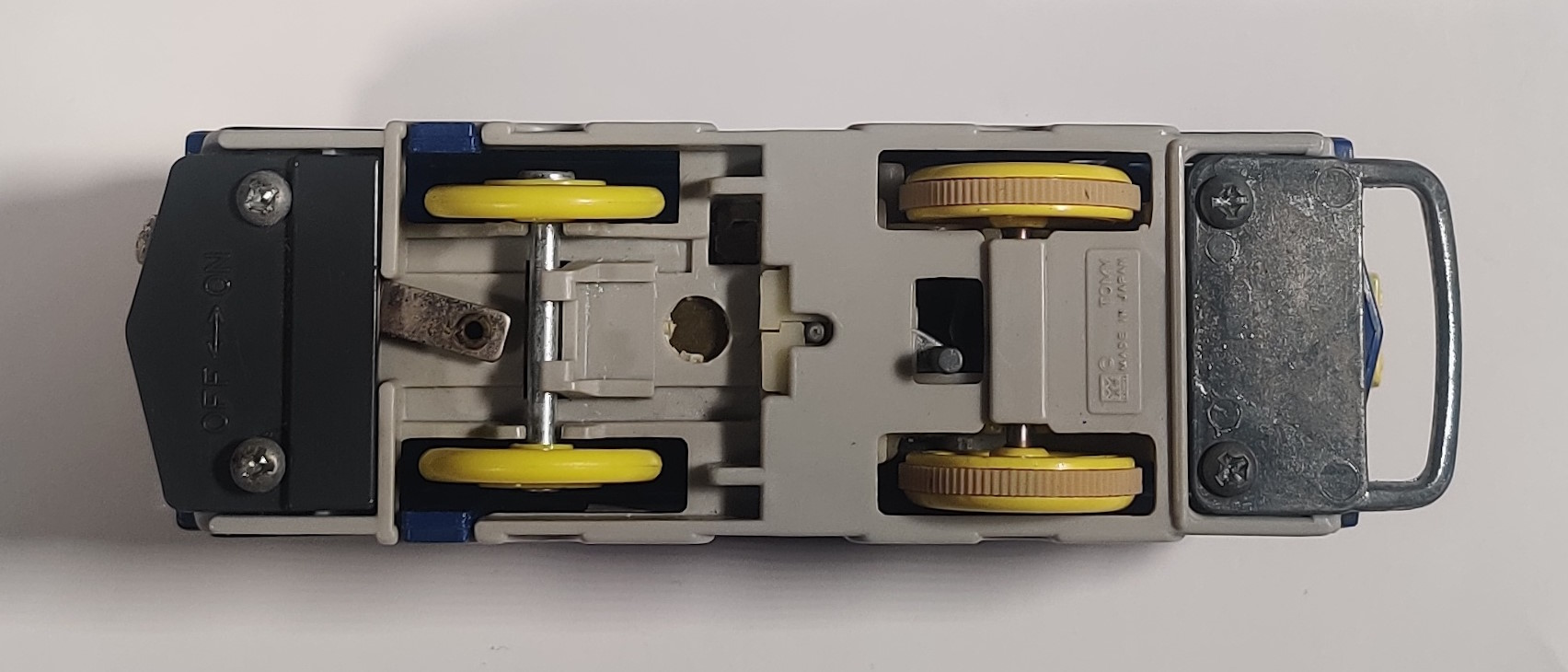
The sixth generation new gearbox EF-66 shown here was produced in September 1992, towards the end of Round-Trip production - I have another new-gearbox EF-66 in worse condition dating to November 1992.
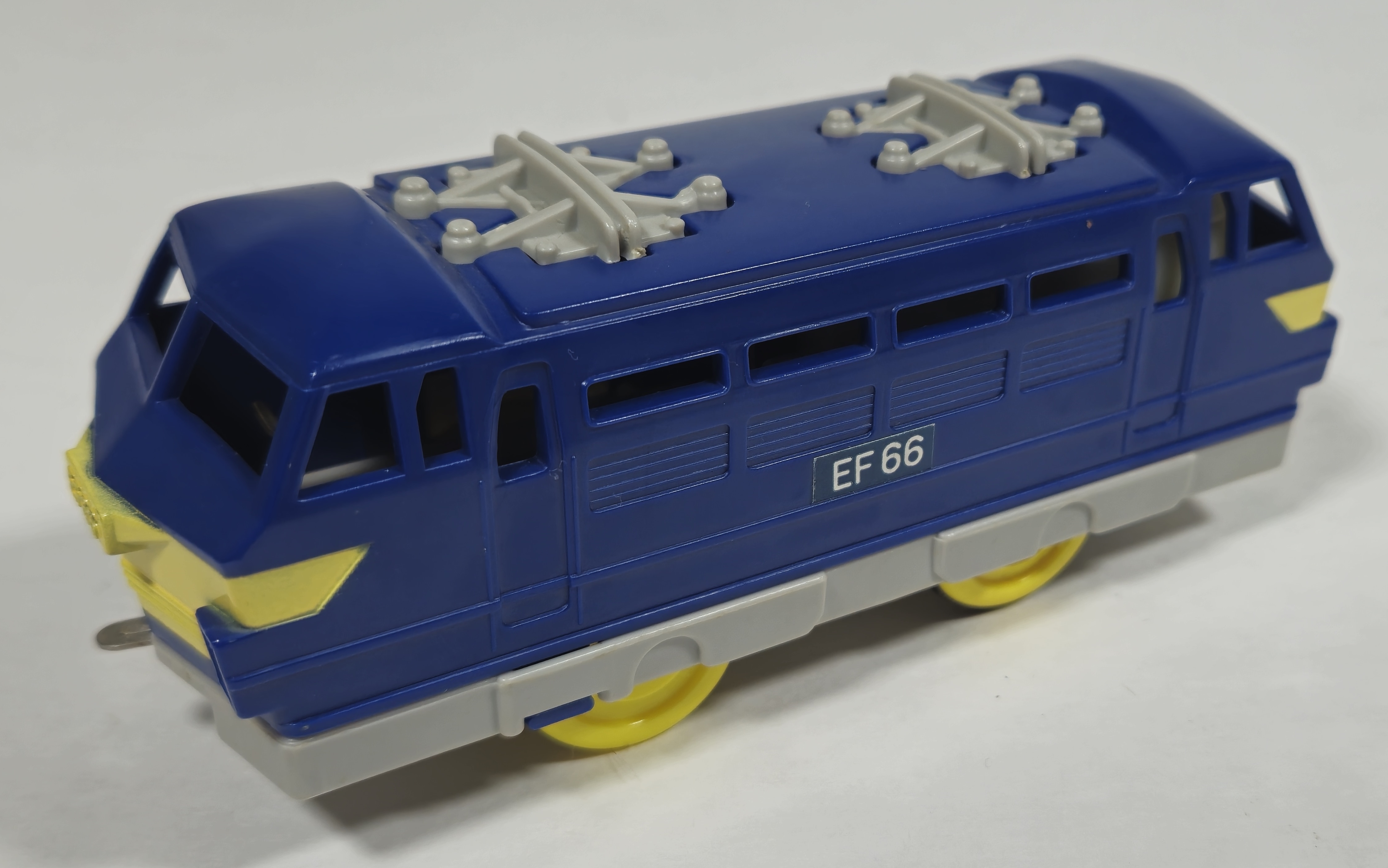
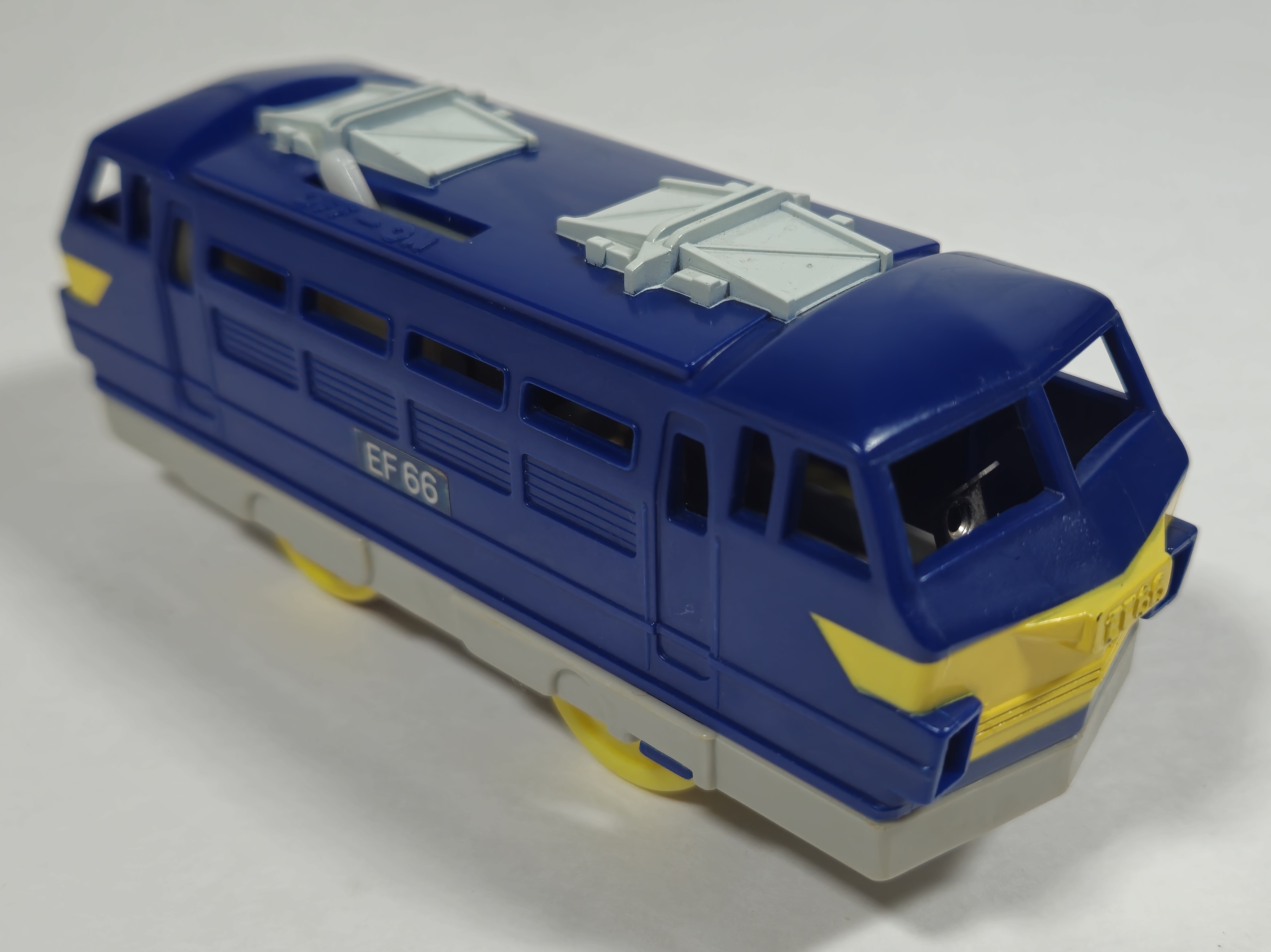
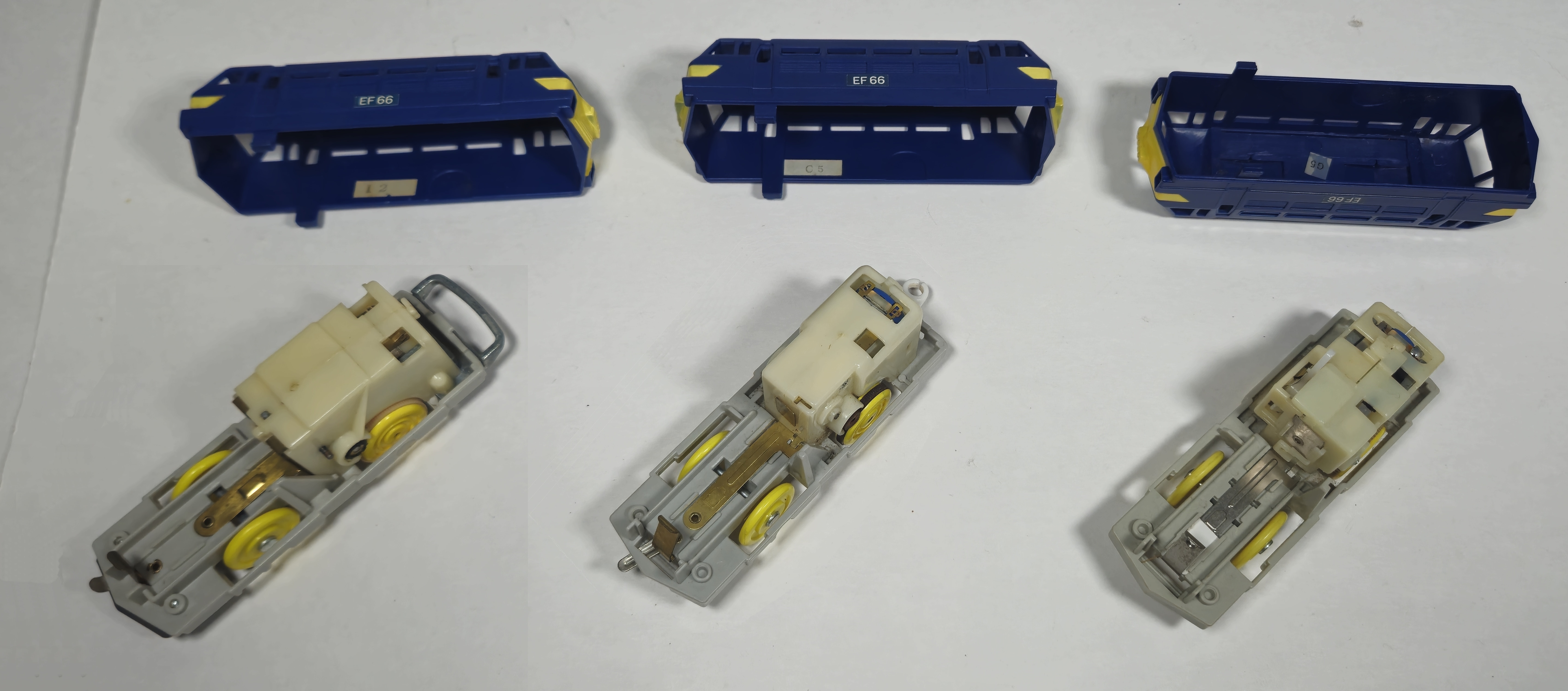
In 1993 the EF-66 chassis was updated to use a traditional (but already outdated) unidirectional old-power gearbox and released as EF-66 Electric Locomotive, still manufactured in Japan. In 1995 the EF-66 tooling was finally updated for new power with the Thailand-made EF-66 Electric Locomotive, which has a new roof section with integrated pantographs to accommodate the new power switch - these more involved retoolings were likely why the EF-66, like the DD51, C-12, Mickey Poppo, and D-51, continued to use old power gearboxes after the move to new power in 1987. Both trains and several other EF-66 variations are covered in more detail on the EF-66 page.